It’s no secret that building a well-developed back entails plenty of pulling exercises and enough protein to support your strength- and muscle-building efforts. While there are different routes you can take to achieve that sculpted look, the best back workouts revolve around a classic pull-day staple: the row.
The number of row variations to choose from may feel overwhelming, but you can’t go wrong with two of the most effective options: the chest-supported row and the bent-over row. But what reigns supreme in the battle between a bench-based back builder and a freestanding barbell movement?
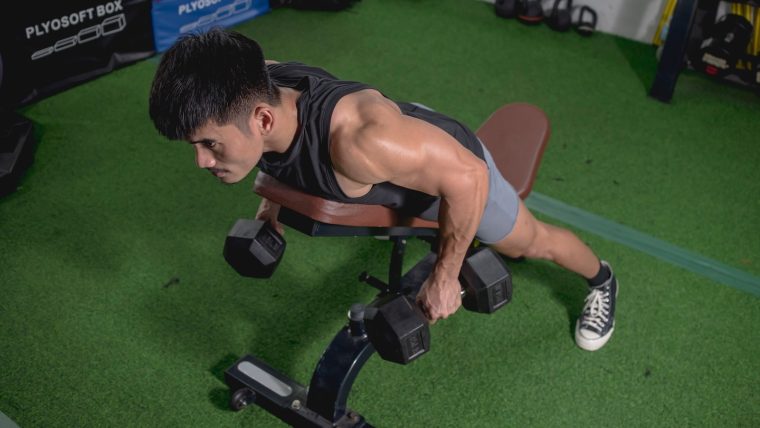
We’ll dive deeper into their differences and similarities, break down how to perform each one safely, and discuss the benefits and drawbacks of both so you can get the most bang for your buck during your next pull-day session.
Table of Contents
Key Differences
- The bent-over row involves the entire posterior chain and requires significant core activation. On the other hand, the chest-supported row recruits your upper-back muscles while mostly removing your lower half from the equation.
- The chest-supported row is generally safer for both beginners and advanced lifters since the weight bench provides stability and protection for your spine. Meanwhile, the lack of assistance with a bent-over row can limit the user’s ability to properly engage the back since they’re directing effort to stabilize their body in a bent-over position.
- Unlike the chest-supported row, the bent-over version directly carries over to other movements like the deadlift and good mornings, as it teaches you how to hip-hinge correctly.
[Related: Lat Pulldown vs. Pull-Up: The Battle for a Bigger Back]
Key Similarities
- Both row variations primarily work the latissimus dorsi (lats), making either movement a fantastic choice for your back or pull-day workout.
- Your grip strength will be put to the test with each exercise. Rowing will help you develop a stronger grip (and forearms), which can pay off when performing exercises like cleans, snatches, and shrugs. (If you’re trying to target your back muscles and your grip strength is a limiting factor, check out our list of the best lifting straps.)
- The bent-over row and the chest-supported row can help add thickness and overall size to your upper- and mid-back, especially if you vary your grip to target specific areas.
Muscles Worked
Like the bent-over row, the chest-supported row involves multiple upper-back muscles — primarily the latissimus dorsi (lats), trapezius (traps), and rhomboids. Your lats, which are the largest back muscles, are the main mover during any row variation. Meanwhile, your traps help stabilize your scapula, and the rhomboids play an important role in shoulder stabilization.
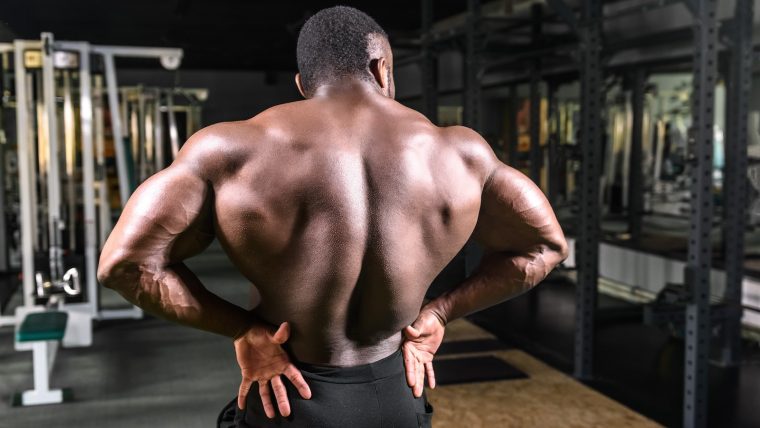
In addition to your lats, traps, and rhomboids, your posterior deltoids — the back shoulder muscles that attach to your shoulder blades — also act as prime movers during the bent-over row and the chest-supported row. Plus, both row variations involve ample biceps activation, as this two-headed muscle assists with flexing your forearm and elbow. As you retract your shoulder blades during a row, your biceps help your arm bend at the top of the movement. You can also increase the stimulus by using a supinated (palms-up) grip.
However, the bent-over row involves several muscle groups and joint structures that the chest-supported version doesn’t. Most notably, this multi-joint movement recruits your hamstrings, glutes, and spinal erectors to prevent any rounding as you pull the barbell toward your body from a hip-hinge position. Overall, your legs and core have to put in an equal amount of effort as your upper body to perform this exercise safely and effectively.
[Related: What Muscles Do Push-Ups Work? Get More Out of This Timeless Exercise]
When to Do the Chest-Supported Row
Sometimes, choosing a chest-supported row simply makes more sense. Whether you’re new to lifting, healing from an injury, or looking to target specific parts of your back, here are a few scenarios where a chest-supported row works best:
You’re a Beginner
Just started strength training? Rather than risk getting hurt performing a more technical movement, stick with the version better suited for beginners. The chest-supported row teaches you how to engage your core and perfect your pulling technique from a seated position that keeps your spine stable.
While you may have to start with lighter dumbbells, you can quickly increase the load if you remain consistent with your approach. Plus, the chest-supported row gives you a chance to learn how changing variables such as your grip, the angle of the weight bench, and time under tension can affect your results. For example, an overhand (pronated) grip will lead to more rear delt and upper-back activation since your elbows come out from your body. An underhand (supinated) grip keeps the elbows closer, forcing your traps and biceps to step up their game.
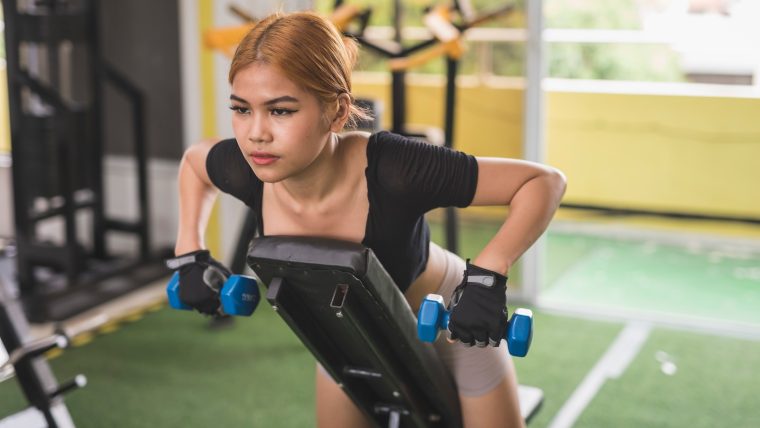
You’re Working Your Way Back From Injury
If you’ve been sidelined by a back injury and are ready to resume training, the chest-supported row is a smart choice. Using a bench for support decreases the pressure on your spine and core, allowing you to focus on performing the movement using precise technique.
Start with lighter weights to set yourself up for long-term success by rebuilding your strength, stamina, and confidence one rep at a time.
You’re Chasing Bodybuilding or Physique Goals
If you want to develop a more defined, muscular back, the chest-supported row lets you target your lats, rhomboids, and traps without your lower back and core being a limiting factor. After all, sustaining a hinged position while rowing a heavy load is very tiring.
From there, you can tailor the exercise to support your physique goals by going heavier, altering the tempo, changing the incline angle, or experimenting with different set and rep ranges. Either way, the chest-supported row stands out as an obvious choice if you want to isolate certain muscles on back day.
When to Do the Bent-Over Row
There’s a reason the bent-over row is near the top of every best back exercise list: it produces results. From athletes aiming to get more explosive to people who need to develop stronger posterior chains to lifters looking for a way to grow a bigger back, here are situations where you can make the bent-over row the star of the show.
You’re Training for Olympic Weightlifting or Powerlifting
All strength and power athletes should include a bent-over row variation in their routine. Olympic weightlifters can benefit from this exercise by using it as a primer for the clean and jerk, which requires explosive movement and a strong upper back.
Plus, powerlifters who want to increase their deadlift PR can also utilize the bent-over row to help reach that goal. Getting comfortable with hinging at the hips, mastering how to brace your core, and learning how to fully engage your lats and other back muscles will only help you perform even better when it’s time to step up to the barbell.
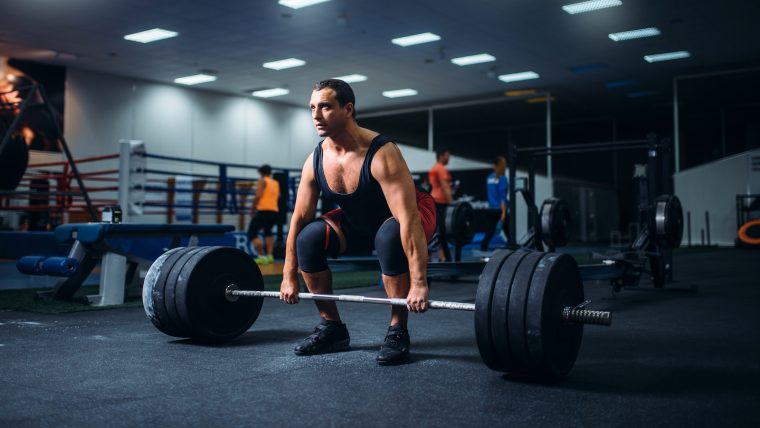
Additionally, bent-over rows can give you a leg up on the squat and the bench press. Developing your traps will create a stronger shelf for the bar to rest on — a major advantage when squatting heavy loads. When it’s time to bench, having a strong upper back will allow you to maintain a better arch and remain stable as you lower the bar toward your chest.
You Want to Strengthen Your Posterior Chain
A weak posterior chain can contribute to low back pain and poor posture. Although it’s a bit of a double-edged sword, the bent-over row can help you in that area by strengthening key muscles like your spinal erectors and hamstrings — both of which are recruited heavily to remain in a strong hip-hinge position.
According to a 2021 review on treatment for chronic low back pain, 12-16 weeks of posterior chain resistance training had a significantly greater effect than general exercise on pain, level of disability, and muscular strength. (1) So, while you shouldn’t try to max out on the bent-over row if you’re trying to build a healthy posterior chain, you can certainly incorporate it into a program that includes fundamental core exercises like dead bugs, bird dogs, and planks.
You Want to Add Overall Size and Strength
If growing a thick, dense wall of muscle along your back matters most, make the bent-over row the main lift on your pull day. A 2009 study comparing three row variations found that this exercise produced large activation symmetrically from the upper to lower back, supporting the idea of the bent-over row as a go-to movement for adding size and strength. (2) Overall, a compound movement will involve more muscle engagement than an isolation exercise like the chest-supported row.
How to Do the Chest-Supported Row
To perform a chest-supported row, you will need a pair of dumbbells and an adjustable weight bench. Changing the incline level (as well as your grip) can alter how you attack your back workout by stimulating specific muscles.
Here’s a step-by-step guide to executing the chest-supported row with the correct technique.
- Set your bench to a 45-degree angle. Grab your dumbbells and lie chest-down on the bench with the weights by your sides and your palms facing inward.
- Press your feet into the floor, engage your glutes, and brace your core to create tension throughout your torso.
- While maintaining a neutral spine and head angle, retract your shoulder blades and pull your elbows toward the ceiling until they form a 90-degree angle.
- Squeeze your upper-back muscles at the top of the movement for one to two seconds, then carefully lower the weights back to the starting position. Keep consistent tension in your abs to protect your lower back as you complete your set.
[Related: How to Do the Pendlay Row]
How to Do the Bent-Over Row
The bent-over row requires just two pieces of equipment: a barbell and weight plates. If possible, use high-quality bumper plates so you don’t have to worry about noise issues. While you can also perform this exercise with a pair of dumbbells, this breakdown covers how to do the traditional barbell bent-over row.
Here’s a step-by-step guide that will help you master the nuances of this compound movement:
- Stand behind a barbell with your feet shoulder-width apart.
- Hinge at the hips by keeping your back straight and bending your knees slightly.
- Grab the bar with your hands slightly wider than your shoulders using a pronated (palms-down) grip.
- Engage your glutes and core, deadlift the bar off the floor, and lean forward to form a 45-degree angle.
- While keeping a neutral spine, pull your elbows back until the bar touches your midsection.
- Hold the contraction for one second before slowly lowering the barbell until your arms are extended and the weight plates are just above the ground.
Benefits of the Chest-Supported Row
The chest-supported row offers plenty of intriguing potential for lifters looking to build a strong, defined back. Let’s examine a few key benefits of performing this exercise.
Added Stability
The biggest benefit of the chest-supported row is undoubtedly having the ability to train your back with the built-in stability of a bench. This is great for both beginners and advanced lifters who want to reach their strength and hypertrophy goals without having to learn a complicated technique or worry nearly as much about core or lower-back limitations.
Takes Advantage of Unilateral Training
As opposed to bilateral exercises like the barbell bench press or the back squat, the chest-supported row lets you attack each side independently. Unilateral training is beneficial in that it allows you to address any imbalances and removes the possibility of one side shouldering more of the load. Supersetting the chest-supported row with another unilateral exercise like single-arm lat pulldowns can take your back workout to another level.
Easier Recovery
The less-taxing nature of the chest-supported row makes it easier to recover during and after your workout. This movement doesn’t demand nearly the same intensity or overall muscle recruitment as a compound exercise like the bent-over row.
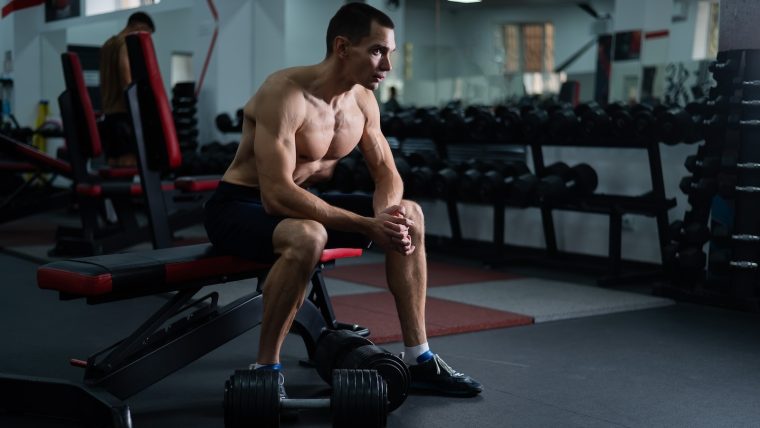
You should be able to catch your breath, reset, and be ready to go for at least a few sets before moving on to the next exercise.
Cons of the Chest-Supported Row
Although added stability and easier recovery stand out as positives, there are some drawbacks to the chest-supported row, including:
Requires More Equipment
Unfortunately, if you don’t have an adjustable weight bench, you won’t be able to perform the chest-supported row. Plus, you need a pair of dumbbells (or kettlebells) that provide enough of a challenge. Without the requisite tools, you will have to turn to other back exercises that don’t require a bench (such as the inverted row) or can be performed without equipment (like Superman holds).
Less Overall Muscle Engagement
There’s a tradeoff for more stability: less muscle engagement. Because you’re seated with your chest against the bench, your core and legs get a bit of a break. So even though the chest-supported row works well for hitting your lats, rhomboids, traps, and biceps, it falls short of the bent-over row in how many muscle groups it recruits.
Can’t Go as Heavy
The awkward body position of the chest-supported row can make it more difficult to jump up in weight. Working at the standard 45-degree angle gives you enough range of motion to pull and squeeze, but only to a certain degree. Even if you’re an experienced lifter with a solid strength base, you’ll quickly realize it can be difficult to control heavier dumbbells and squeeze out clean reps.
Benefits of the Bent-Over Row
Whether you’re a bodybuilder, strength athlete, or general gym goer, the bent-over row presents a wealth of potential muscle- and strength-building benefits.
Carryover to Other Pulling Exercises
Whether it’s pull-ups, deadlifts, or the cable seated row, you can put yourself in a better position to perform well at other pulling exercises via the bent-over row. Building strength and endurance in your lats and traps will carry over to muscle-building exercises like dumbbell pullovers, lat pulldowns, and face pulls.
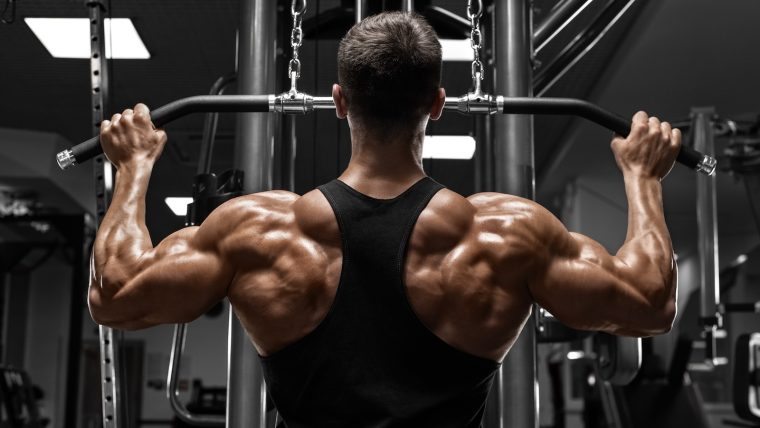
Plus, training your glutes, hamstrings, and core to handle a rowing motion from a bent-over position will give you a stronger trunk to handle whatever deadlift variation you prefer.
Compound Movement
According to a 2017 study on resistance training modalities, multi-joint exercises are more effective for improving muscle strength and maximal oxygen consumption than single-joint ones. (3) That makes something like the barbell bent-over row a great bang-for-your-buck choice for your training protocol. Not only does it build upper-body strength, but it also stimulates your abdominal and leg muscles from start to finish.
Improved Posture
A sedentary lifestyle can lead to slouched shoulders, weak spinal erectors, and disengaged glutes. The bent-over row can help counteract that by allowing you to strengthen your posterior chain. As you progress, you shouldn’t be surprised to see an improvement in your posture and a reduction in lower back issues.
[Related: 6 Deadlift Benefits Everyone Should Know About]
Cons of the Bent-Over Row
Is the bent-over row the right pull-day movement for you? Before you pencil it into your program, here are some cons to consider.
Injury Risk
Although it can be great for developing explosive power and upper-back strength, the bent-over row can be dangerous if done incorrectly. Maintaining proper form can be a major challenge, as you must cohesively coordinate multiple muscle groups and joint complexes to allow you to hold a loaded hip-hinge position for the duration of your set.
Just a slight slippage in form — such as rounding your lower back or slightly shifting your hips to one side — can lead to a strained muscle, ligament, or more severe injury. Whether you repeatedly perform the bent-over row incorrectly or you just lose focus for one rep, you run the risk of experiencing a setback that could derail your training plans.
Grip Strength Limitations
If you’re taking the glass-half-empty view, one of the drawbacks to the bent-over row is that your grip strength is a limiting factor. If your forearms and hands can’t handle holding, lifting, and lowering a loaded barbell repeatedly, you will struggle to execute the movement effectively or efficiently. This can also be the case with the chest-supported row if you use heavy dumbbells.
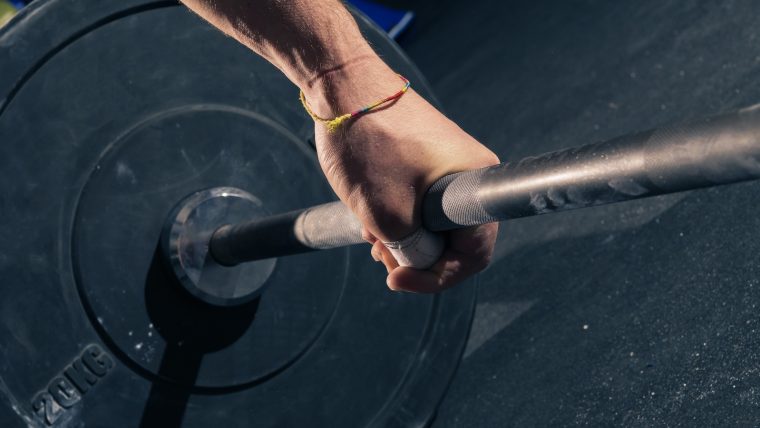
You can overcome this problem by consistently working on grip strength exercises or using lifting straps for support. While the former will help you get better at bent-over rows and other lifts that require good grip strength, the latter will let you work with heavier loads by keeping your hands securely fastened to the barbell.
Demanding on Lower Back and Core
Compound exercises like the bent-over row essentially put your entire body to the test. While there are certainly benefits to recruiting multiple muscle groups in one movement, your training session can quickly go south if you don’t have a well-developed core.
Hinging at the hips and remaining in that near-horizontal position while pulling the weight vertically places significant stress on your lower back and abdominal muscles. Once fatigue sets in, you may struggle to keep the correct form or have to put down the barbell entirely.
Using Momentum
While the chest-supported row forces you to use proper form by keeping your chest against the bench, the freestanding position of the bent-over row opens the door to using momentum to lift the weight. If you go too heavy, get fatigued, or lose focus, it’s easy to cheat the ensuing reps by swinging or jerking the barbell rather than maintaining tension and executing strict, controlled reps. Not only will this limit the effectiveness of the exercise, but it could also lead to an injury.
Row Till You Grow
The battle between the chest-supported row vs. the bent-over row doesn’t necessarily have a winner or a loser. Both exercises offer unique benefits that can assist with sculpting the back of your dreams. At the same time, there are notable differences between the two rowing variations that can make one or the other a more logical choice based on your individual goals.
Ultimately, your best bet is to include both the chest-supported and bent-over versions in your workout plan. That way you can pack serious size on your frame, develop better posterior chain and grip strength, and reap all the rewards of rowing — one pull at a time.
FAQs
Because each variation brings unique benefits, it’s tough to say one is inherently better. However, if you’re focused on gaining the most size and strength, the bent-over row is the superior choice. That said, the chest-supported row is still useful for training your upper- and mid-back and is generally easier to perform, making it a solid option for beginners.
Despite their name differences, both describe the same exercise. Whether you call it a chest-supported row or an incline row, you will need an adjustable weight bench and a pair of dumbbells to support your back-building efforts.
The ideal body position for a bent-over row calls for a forward lean of about 45 degrees. Although you can go a little further (around 60 degrees is my preference), hinging your hips to 90 degrees will put more stress on your posterior chain and may make the exercise more difficult to perform repeatedly.
References
- Tataryn, N., Simas, V., Catterall, T., Furness, J., & L. Keogh, J. W. (2021). Posterior-Chain Resistance Training Compared to General Exercise and Walking Programmes for the Treatment of Chronic Low Back Pain in the General Population: A Systematic Review and Meta-Analysis. Sports Medicine – Open, 7.
- Fenwick CM, Brown SH, McGill SM. Comparison of different rowing exercises: trunk muscle activation and lumbar spine motion, load, and stiffness. J Strength Cond Res. 2009 Mar;23(2):350-8. doi: 10.1519/JSC.0b013e3181942019. PMID: 19197209.
- Paoli, A., Gentil, P., Moro, T., Marcolin, G., & Bianco, A. (2017). Resistance Training with Single vs. Multi-joint Exercises at Equal Total Load Volume: Effects on Body Composition, Cardiorespiratory Fitness, and Muscle Strength. Frontiers in Physiology, 8.
Featured Image: Jasminko Ibrakovic / Shutterstock
